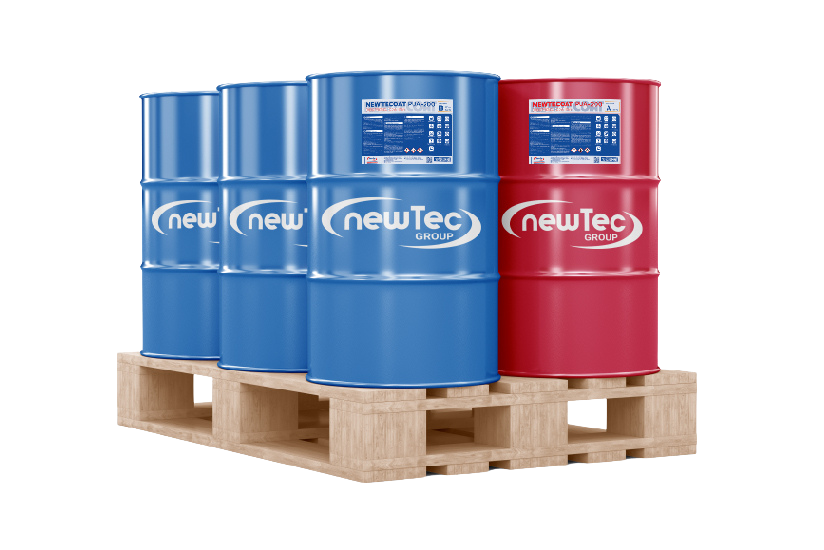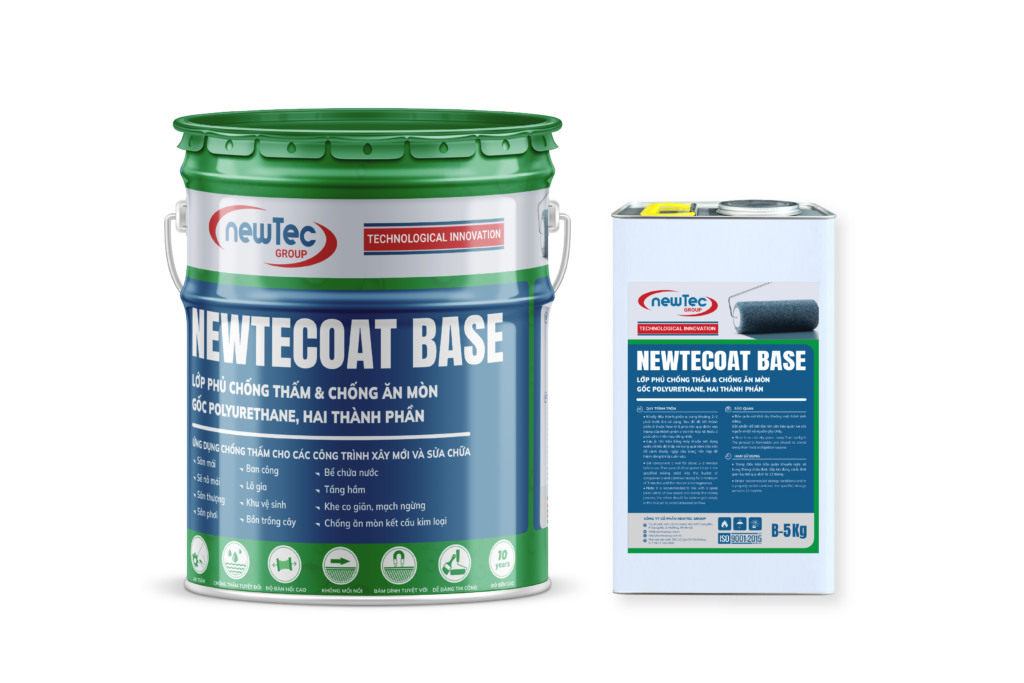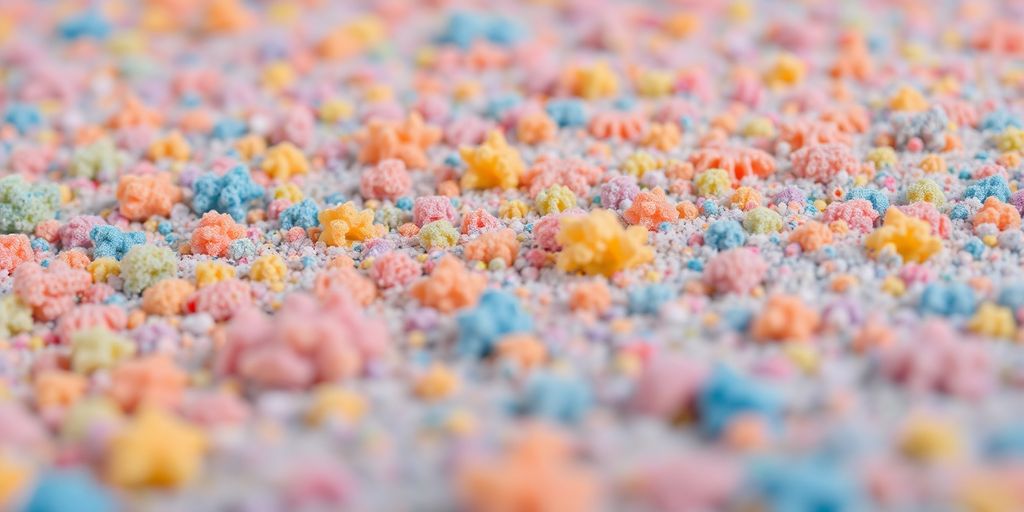Polyurethane is a material that shows up in a lot of everyday items, from furniture to car parts. But have you ever wondered what it’s actually made of? In this guide, we’ll break down the basics of polyurethane, looking at its components, how it’s made, and where it’s used. By the end, you’ll have a clearer picture of what makes this versatile material so popular.
Key Takeaways
- Polyurethane is created from two key ingredients: polyols and isocyanates, which combine to form urethane links.
- There are two main forms of polyurethane: thermosetting, which hardens permanently, and thermoplastic, which can be reshaped when heated.
- Polyurethane is known for its flexibility and durability, making it suitable for a wide range of uses.
- The manufacturing process involves tweaking the amounts of polyols and isocyanates to achieve the desired properties, whether soft or hard.
- Environmental concerns are driving the search for biodegradable alternatives and improved recycling methods for polyurethane.
The Chemistry Behind Polyurethane
Understanding Urethane Links
Okay, so polyurethane is basically built from chains of organic molecules, and these chains are connected by what we call urethane links. These links are super important because they’re what give polyurethane its unique properties. They’re formed when polyols (which are alcohols with a bunch of hydroxyl groups) react with isocyanates. This reaction is what makes polyurethane so special and useful. Depending on how you tweak the process, these urethane links can create materials that are either super hard or nice and flexible.
Role of Polyols and Isocyanates
Polyols and isocyanates? They’re the main ingredients. Think of it like baking a cake – you need flour and eggs. For polyurethane, it’s these two. Polyols are like the flour, giving the material its flexibility and stretch. Isocyanates are more like the eggs, deciding how hard or soft the final product will be. Common isocyanates include things like TDI and MDI. By messing around with how much of each you use, you can make all sorts of things, from soft foams to tough plastics. It’s all about getting the mix just right. The urethane polymer is very important.
How Polyurethane Differs from Other Polymers
Polyurethane isn’t like your regular plastics, like polyethylene or polystyrene. Those melt when you heat them up, but polyurethane usually stays solid, even when it’s hot. This makes it great for things that need to hold up under pressure, like insulation or car parts. Plus, it can even mimic rubber, metal, and fabric. It’s super versatile, which is why it’s used in so many different ways. It’s not just another plastic; it’s something else entirely.
Polyurethane can mimic the properties of rubber, metal, and even fabric, making it incredibly versatile. It was first developed in the 1930s and has since evolved into a material used in countless industries, from automotive to fashion. Its durability, flexibility, and resistance to chemicals make polyurethane a preferred choice over many other types of plastics.
Components of Polyurethane

Okay, so polyurethane. It’s everywhere, right? Furniture, cars, even some clothes. But what’s actually in the stuff? It’s more than just one thing; it’s a mix of different chemicals that come together to make something pretty useful. Let’s break down the main players.
Polyols: The Flexible Backbone
Polyols are basically alcohols with a bunch of hydroxyl groups. They’re what give polyurethane its flexibility and stretch. Think of them as the foundation. Different types of polyols can be used, and each one affects the final product differently. Some make the polyurethane softer, while others make it more rigid. It’s all about choosing the right polyol for the job. They form the urethane polymer.
Isocyanates: Determining Hardness
If polyols are the flexible backbone, isocyanates are what determine how hard or soft the polyurethane becomes. They react with the polyols to form the urethane links. Common isocyanates include things like MDI (methylene diphenyl diisocyanate) and TDI (toluene diisocyanate). The type and amount of isocyanate used will greatly influence the final product’s properties. For example, using more isocyanate generally leads to a harder, more rigid material. Diisocyanates adds rigidity and strength.
Additives and Their Functions
It’s not just polyols and isocyanates in the mix. Additives play a big role too. These can be things like catalysts, blowing agents, flame retardants, and stabilizers. Each additive has a specific job. Catalysts speed up the reaction between the polyols and isocyanates. Blowing agents create the foam structure in foam-based polyurethanes. Flame retardants help to make the material less flammable. Stabilizers protect the polyurethane from things like UV light and oxidation. Here’s a quick rundown:
- Catalysts: Speed up the reaction.
- Blowing Agents: Create foam.
- Flame Retardants: Reduce flammability.
Getting the right mix of additives is key to achieving the desired properties in the final polyurethane product. It’s like baking a cake; you need the right ingredients in the right amounts to get the perfect result.
Types of Polyurethane

Polyurethane is pretty cool because it comes in different forms, each with its own set of properties and uses. It’s not a one-size-fits-all kind of material. You can tweak it to be super rigid or really flexible, depending on what you need. Let’s check out the main types.
Thermosetting Polyurethane
Thermosetting polyurethane is the kind that, once it’s set, it’s set for good. Think of it like baking a cake; you can’t unbake it. This type undergoes a chemical change that’s irreversible. It’s strong, durable, and can handle high temperatures, which makes it great for things like insulation, coatings, and adhesives. Once it’s cured, you can’t melt it down and reshape it. It’s a permanent deal.
Thermoplastic Polyurethane
Thermoplastic polyurethane (TPU) is more flexible, literally and figuratively. You can melt it down and reshape it over and over again. This makes it recyclable and ideal for products that need to be elastic and resistant to abrasion. Think phone cases, shoe soles, and certain automotive parts. It’s like plasticine; you can keep molding it into different shapes. The versatility of thermoplastic polyurethane is a big plus.
Applications of Each Type
So, where do you see these different types in action? Well, thermosetting polyurethane is often used in situations where you need something that can withstand a lot of stress and heat. You’ll find it in:
- Insulation panels for buildings
- Protective coatings for industrial equipment
- High-performance adhesives
On the other hand, TPU shines in applications where flexibility and durability are key. It’s common in:
- Flexible tubing
- Protective cases for electronics
- Sporting goods
The choice between thermosetting and thermoplastic polyurethane really comes down to the specific requirements of the application. Do you need something that’s incredibly strong and heat-resistant, or something that’s flexible and recyclable? That’s the question to ask.
Here’s a quick comparison:
| Feature | Thermosetting Polyurethane | Thermoplastic Polyurethane (TPU) |
|---|---|---|
| Reversibility | Irreversible | Reversible |
| Heat Resistance | High | Moderate |
| Flexibility | Low | High |
| Common Uses | Insulation, Coatings | Phone Cases, Shoe Soles |
| Chemical Behavior | Cross-linked | Linear or Branched |
Manufacturing Process of Polyurethane
Mixing Polyols and Isocyanates
The creation of polyurethane starts with a pretty important step: mixing polyols and isocyanates. The secret to polyurethane lies in the precise ratio of its two main components: polyols and isocyanates. Think of it like baking a cake – too much of one ingredient, and the whole thing flops. These two chemicals react to form urethane linkages, which are the backbone of the material. The proportion of each determines if the final product is flexible, rigid, or somewhere in between. It’s a bit like a science experiment in your garage, but on a much larger scale. You’ve got to get the mix just right to achieve the desired properties in the final product. It’s not just about throwing stuff together; it’s about precision and control.
Role of Catalysts in Production
Catalysts are the unsung heroes in the polyurethane manufacturing process. They might not be the main ingredients, but they play a huge role in speeding up the reaction between the polyols and isocyanates. Without catalysts, the reaction would take way too long, making production impractical. Different catalysts can also influence the type of reaction that occurs, affecting the final properties of the polyurethane. It’s like adding a pinch of spice to a dish – a little goes a long way in changing the flavor. The right catalyst can help you achieve the perfect polyurethane product every time.
Adjusting Ratios for Desired Properties
One of the coolest things about polyurethane is how versatile it is. By tweaking the ratios of polyols and isocyanates, you can create materials with a wide range of properties. Want something flexible? Adjust the ratio. Need something rigid? Tweak it again. It’s all about finding the sweet spot. Additives also play a huge role in determining the final characteristics of the polyurethane. These additives can change everything from the color and texture to the flammability and durability. For example:
- More polyols generally lead to a softer, more flexible material.
- Higher isocyanate content results in a harder, more rigid product.
- Additives can enhance flame retardancy or UV resistance.
The cool thing about polyurethane is how versatile it is. By changing the manufacturing process and the ingredients, you can create a material with a wide range of properties. It’s really adaptable.
Environmental Impact of Polyurethane
Sustainability Concerns
Okay, so polyurethane is everywhere, right? Super useful, super versatile. But let’s keep it real, it’s not exactly winning any awards for being eco-friendly. The big problem is that polyurethane doesn’t break down easily in the environment. It can hang out in landfills for a seriously long time. And when it does eventually start to degrade, it can release some not-so-great chemicals into the soil and water. Not ideal. It’s a durability thing, which is great for products, but not so great for the planet. The non-biodegradability is a serious concern, especially as global waste continues to grow. We need to find ways to deal with the environmental footprint of this stuff.
Potential for Biodegradable Options
Plastic waste is a huge problem, and polyurethane contributes to that. That’s why there’s a big push for biodegradable options. Imagine a polyurethane that breaks down naturally over time, reducing its environmental impact. Sounds pretty good, right? Researchers are exploring different approaches, like using plant-based materials and developing new chemical structures that are more susceptible to decomposition. It’s still early days, but the potential is there. If we can crack the code on biodegradable polyurethane, it could be a game-changer for the industry.
Recycling Methods and Innovations
Recycling polyurethane is tricky because of its chemical structure. However, certain types, like thermoplastic variants, are easier to recycle and can be reused in new products. Key efforts include:
- Developing mechanical recycling methods to repurpose polyurethane waste.
- Investigating chemical recycling to break it down into reusable raw materials.
- Encouraging industries to adopt closed-loop systems, where waste is fully recycled into new polyurethane products.
Polyurethane’s environmental impact is significant, but ongoing innovations in recycling and sustainability offer hope for reducing its ecological footprint.
Applications of Polyurethane
Polyurethane is everywhere! Seriously, once you start looking, you’ll see it in so many things you use every day. It’s not just one thing; it’s a whole family of materials with different properties, which makes it super useful across tons of industries. From making your couch comfy to helping your car run smoothly, polyurethane is a workhorse material.
Use in Furniture and Upholstery
Think about your sofa. Chances are, the comfy cushions are made with flexible polyurethane foam. This foam provides the support and comfort we expect from our furniture. But it’s not just about comfort. Polyurethane is also used in the upholstery itself, especially in faux leather options. These materials offer a durable and affordable alternative to real leather, making stylish furniture accessible to more people.
Automotive Applications
Polyurethane plays a huge role in the automotive industry. It’s used in car seats for comfort and support, in dashboards for impact absorption, and even in suspension bushings to reduce noise and vibration. Its ability to absorb energy makes it a great choice for bumpers and other safety components. Plus, it helps improve fuel efficiency because it’s lightweight. You can find polyurethane products in many cars.
Industrial and Construction Uses
In the industrial and construction sectors, polyurethane really shines. Rigid polyurethane foam is a fantastic insulator, helping to keep buildings energy-efficient. Adhesives made from polyurethane create strong and lasting bonds for structural elements like wall panels and windows. It’s also used in heavy-duty equipment, like fork trucks, because it can handle heavy loads and resist wear and tear. It’s often used to mitigate abrasion issues that occur with machine parts, preventing downtime and keeping productivity high.
Polyurethane’s versatility stems from its ability to be customized. By tweaking the chemical formulation, manufacturers can adjust properties like flexibility, density, and resistance to chemicals. This adaptability makes it suitable for a wide array of applications, from soft foams to hard plastics.
Future of Polyurethane
Innovations in Material Science
Material science is constantly pushing boundaries, and polyurethane is right there in the mix. One exciting area is the development of self-healing polyurethanes. Imagine a material that can repair minor damage on its own, extending its lifespan and reducing waste. Researchers are also exploring ways to incorporate new materials, like graphene, to enhance strength and other properties. It’s all about making polyurethane smarter and more adaptable.
Eco-Friendly Alternatives
Let’s face it, traditional polyurethane isn’t exactly eco-friendly. That’s why there’s a big push for greener options. One promising avenue is bio-based polyurethanes, made from renewable resources like plant oils. These alternatives can reduce our reliance on fossil fuels. Another approach is designing polyurethanes that are easier to recycle or break down. The goal is to minimize the environmental impact of this versatile material. The polyurethane foam market is looking into these alternatives.
- Bio-based polyurethanes from plant oils
- Recyclable polyurethane designs
- Biodegradable polyurethane options
It’s important to remember that while polyurethane presents environmental challenges, innovation is happening all the time. Researchers are constantly looking for ways to make it greener, from developing new recycling technologies to creating bio-based alternatives. The future of polyurethane could be a lot more sustainable than its past.
Trends in Production Techniques
Okay, so polyurethane has been around for a while, and it’s pretty useful. But what’s next? Well, a lot of the focus is on making it better to produce. Think about it: can we make it faster, cheaper, and with less waste? That’s the goal. New techniques are popping up all the time, aiming to streamline the manufacturing process. For example, some companies are experimenting with continuous production methods to reduce batch-to-batch variation and improve overall efficiency. It’s all about tweaking the process to get the best possible product with the least amount of hassle.
Wrapping It Up: The Basics of Polyurethane
So, there you have it. Polyurethane is a pretty fascinating material made from polyols and isocyanates. It’s not just your run-of-the-mill plastic; it has a lot of versatility and can be used in all sorts of ways. From the foam in your couch to the coatings on your floors, it’s all around us. Knowing what it’s made of helps us see its importance in our everyday lives. If you need something tough or flexible, polyurethane is the way to go. Just keep in mind, it’s all about that chemical reaction that makes it all happen!
Frequently Asked Questions
What is polyurethane made from?
Polyurethane is made from two main ingredients called polyols and isocyanates. When these two chemicals mix, they create a strong material that can be either soft or hard.
What are polyols?
Polyols are types of alcohol that help make polyurethane flexible. They are a key part of the chemical reaction that creates polyurethane.
How do isocyanates affect polyurethane?
Isocyanates are chemicals that determine how hard or soft the final product will be. Different isocyanates can change the properties of polyurethane.
What are the types of polyurethane?
There are two main types of polyurethane: thermosetting, which hardens permanently, and thermoplastic, which can be reshaped when heated.
What are some common uses for polyurethane?
Polyurethane is used in many products, including furniture, car parts, and insulation materials. It’s valued for its durability and flexibility.
Is polyurethane environmentally friendly?
There are concerns about polyurethane’s impact on the environment, but researchers are working on biodegradable options and better recycling methods.





You may also be interested in
Is Polyurethane Safe? Understanding the Risks and Benefits of This Versatile Material
Polyurethane is a popular material found in many everyday products, from furniture to insulation. But
Mar
What Does Polyurethane Do? Understanding Its Benefits and Applications in Woodworking
Polyurethane is a popular finish in woodworking, and for good reason. It offers a tough
Mar
Understanding What is Polyurethane Made Of: A Comprehensive Guide
Polyurethane is a material that shows up in a lot of everyday items, from furniture
Mar
What is Polyurethane Coating and Why You Should Consider It for Your Next Project
If you’re looking for a reliable way to protect surfaces, you might want to consider
Mar
Understanding What Is Polyurethane Foam Made Of: A Deep Dive into Its Composition and Production
Polyurethane foam is everywhere, from the cushions on your couch to the insulation on your
Mar
Understanding What is Polyurethane Made Of: A Comprehensive Guide
Polyurethane is a material that pops up in all sorts of products we use every
Mar
What Is Polyurethane Foam Made Of? A Comprehensive Guide to Its Composition and Uses
Polyurethane foam is everywhere. From the cushion you’re sitting on to the insulation in your
Feb
Is Polyurethane a Plastic? Understanding Its Properties and Uses
Ever wondered if polyurethane is a type of plastic? It’s a question that pops up
Feb